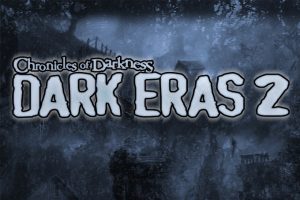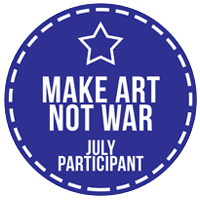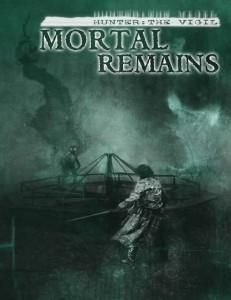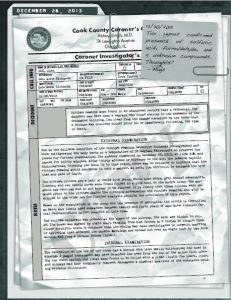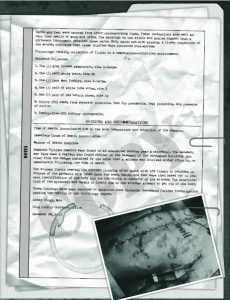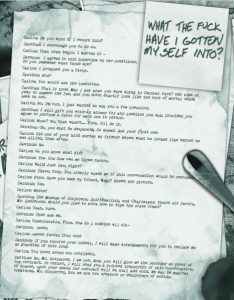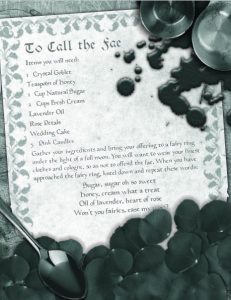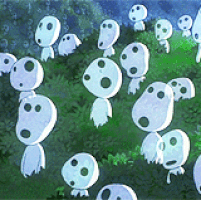
This post is for a fantastic, super-passionate writer of AllTheGamesTM Jason L. Blair, who told me it was necessary. The idea for this came out of a discussion with Tex Thompson, and I wasn’t sure if this was the type of post that anybody would want to read. So Jason? Here you go, my friend.
Defining Failure and Success
First, some context on how I view this subject before I talk about myself. What is failure? It’s a word that carries a lot of negative (almost moral) weight, and I find this is problematic for so many reasons. Try telling someone what you’ve lost, what you’ve been through, what you used to have. They don’t know what to say. Maybe they want to make you feel better. Maybe your story makes them feel better about themselves. Maybe they pity you. The ones who do either have been through something similar, and can provide empathy or directions forward, or they haven’t and their pity is a form of judgement because they think that failure can be avoided altogether if only you “did these things”.
Usually, in my experience other people’s reactions toward failure are a combination of the above. It’s also the reason why a lot of folks don’t talk about it, for fear of being judged or ostracized. It’s the Law of Attraction, the fantasy that if you were to only hang out with successful people that you would get some of that wealth/power/fame/sex/etc. too. And sometimes, due to the nature of human beings, that does indeed happen because successful people have more of the thing we want to have. Sometimes, success breeds success and being in a higher class or prominent position does help–but not always. Some absolutely pay it forward and share it, while others hoard it or push new people down. Either way, the successful artist is often who we want to be–so most artists are drawn to them for multiple reasons. In a field with so many uncertainties, there had to be a magical solution, a sweetheart success story, some tangible reason they made “it” whatever “it” happens to be.
Making “it” is also toxic, however, because if you’re in this business you typically don’t stop making art when one project hits and your career doesn’t halt. You certainly can and you might? But, for so many of us, we cannot afford to stop. Too, you might create something that earns you well-deserved acclaim, but all the things that come from that–fame, adoring fans, new opportunities, etc–are a result of the thing you made not necessarily the cause. And, if you’re an artist who’s been in the business a long time, then you know full well there is no “it”. Our careers are like giant, tangled balls of yarn as opposed to ladders–but that is the reality, rather than this very damaging perception there’s a path to making “it” and there’s room for precious few. Because what happens (and I’ve seen this over and over and over again) when an artist is perceived as no longer making “it”, then they get dropped by some and ostracized until they’re in the spotlight once again.
Success… Failure… The idea that artists (or any other human being for that matter), are on a linear path, that visibility/quality of the work you’re doing eclipses the money made (e.g. selling out instead of earning what you deserve), that the path to publication is a pyramid you use to “level up”, these ideas are incredibly unhealthy and damaging for the simple fact that the “pyramid scheme” assume all artists have the same chances and opportunities as everyone else. Newsflash: we don’t. Why? Well, every vertical I’ve been in, while they have their own quirks and whatnot, are comprised of people who work in systems that are functional and dysfunctional to varying degrees. People who make decisions, who befriend or dismiss you, who claim they can make or break your career, who influence, who get hired and fired all the time, who have their own biases and desires, who possess reasons why they want to make their own version of “it”, who include the amazing, the good, the bad, and the trash fires.
What you consider to be failures, someone else might believe are your successes. Worse? There’s this idea of “earning” both, because of what you “deserve” based on any number of factors: time you put in, your identity, your personality, etc. You “earn” success, even though first time scriptwriters or nascent artists get big opportunities all the damn time, while other veterans languish in obscurity, or successful artists simply “got lucky”. Conversely, you “earn” failure. You must have done something wrong, right? You deserved that, too. Even if you didn’t, a book that doesn’t sell, a gig that falls through, a door that gets slammed is still your fault.
Failure and success are both incredibly subjective. How do you quantify it? With money? If that’s the benchmark, then why are artists sell-outs? Due to the ostracization that often results from these discussions, failure has become a taboo subject for many people. And, in some Western circles, often what you have and how you present yourself is a measure of your intrinsic value. That, as well, is wholly problematic, because if you lose all your physical possessions you’re still “you”. House or apartment, car or bus, Gucci or generic, are trappings. It’s your actions that define you.
Assumptions Fueled My Darkest Spots
Looking back, I now understand that the differences between what I value versus what others do have affected many of my earlier failures. (By personal failure, I mean: “this project fell apart/didn’t do well and I had a hand in it.” Not: “shit happened outside of my control.”) When you Go Through Some ShitTM, you stop caring about petty competitions and minutia. You cease worrying about how green your grass is or whether or not some rando will snap pics of you wearing tennis shoes with a fancy dress, because you’re happy to be alive. Safe. Able to do what you love. Be with those you love.
When I start writing professionally, I had already studied at uni–and that entire experience was a fight. Everything I wanted, I fought very hard for and afterwards I was exhausted. So, for me, I was ecstatic when my partner not only had my back, but recognized that while I have tried to be everything else–I am an artist and performer in every sense of the word. Then, I got hired. Someone wanted to read my work! Wa-hoo! And yet, I was operating under many assumptions, if only because my time at uni often pissed on genre.
In my head, everyone outside of high-falutin’ literature was this BIG HUGE HAPPY FAMILY OF MISFITS and it’s cool if you write/design for games or comics or media/tie-in or whatever and people pay it forward because this is how happy misfits work. This is me talking. Who has never known what it was like to have a healthy, supportive family until I actively built one of my own. I believed that such beautiful creations had to be made by such amazing people! And it wasn’t possible for amazing art to be made by shitty people! Mind you: I didn’t know what fandom was, either, even though I was a fan myself, and was far removed from understanding the history, the various communities, and how SF&F came to be. I was new, in every sense of the word. I was starry-eyed because I had a place to put my love and (of course) I assumed it would be very loving in return–thus fueling my work.
Spoiler alert: this dream shattered me. I discovered that the people I dealt with initially did not respond well to “givers”, because they’re wondered what you want, what you’re trying to sell, what you assume you’ll get out of it. “Just don’t”. I was told, on so many occasions. “Wait until you’ve made it”. “Be selfish. It’s expected.” To some extent I can see the logic, for there are some people who just take and take and take regardless of success, and they look down on people like me who haven’t made “it” in their eyes. The takers sometimes hurt the givers, and I’m not sure they always realize that. (Which is hilarious, because in some venues I have made “it”, but I haven’t in others.) But, again, going back to what I value… I don’t give to complete strangers because I expect something. That’s a recipe for disastrous feelings and expectations.
In the beginning of my career, however, I gave because that’s what I thought was normal; I assumed that’s what everyone else did, too. In gaming, for example? We often help each other, because there’s a strong collaborative component to the production process. Then, when I realized I needed to make better decisions about who I was giving to, I felt like an alien. I felt as if I was doing something wrong, because I was perceived by some as selfless instead of self-assured. Here’s the truth: I gave indiscriminately, because I didn’t know when I’d lose the opportunity to give back, being so grateful for finally being in a place where I could make and sell my work. To me, having been around so much loss, I felt as if it was better to do what you can, when you can, as opposed to sitting around waiting for a day that might never come. I still believe this, but I’m more selective and give by degrees.
After a while, I encountered other people’s bitterness, the kind that comes from not making “it”, and the extraordinary lengths others go to try to make “it” by: campaigning for awards, engineering friendships with famous people, working on the “right” projects, connecting with the “right” people–and that’s all on the vanilla side, things that aren’t guaranteed to work. From this, and the resulting back chatter, I internalized there was a culture where you could make a great many missteps, and that terrified me. Here was an entire subset of society that wasn’t the idyllic collection of people I hoped to meet. Here were judgments about what you did, what you had, who your friends were, where you published, what art you made. And, supporting this feeling, were the comments I’ve received over the years. I’m too old. Too smart. Too terrifying. Too “much”. Too opinionated. Too blunt. Even, too female or too feminist or too caring or too experienced or too inexperienced or too serious or too pretty. Too, too, too often accompanied by a slew of “nots”. I’m not a good artist, I’m not living in the right place, I’m not bubbly enough, I’m not smiling enough, I’m not pretty/skinny/young enough, I’m not connecting with the right people or working on the right project. I’m just “not”.
That, right there, is what caused the vast majority of what I consider my personal failures as an artist. Because at that moment, when I believe this bullshit–and hoo have I ever–that’s when I “look up”. And, I wonder… Am I doing this art thing right? If I just kept my mouth shut and dealt with that toxic person, would my career be any further along? If I went back to that dude’s hotel room, would that have flung the door to Hollywood wide open? If I was a little bolder, shouldn’t I start asking my famouser-than-me friends for favors? If I just… If I had… If I did… Over and over and over again wondering if, by doing the things that allow me to sleep at night, by remaining true to the person I know I am, did I sabotage any chance of making “it”?
I didn’t know then. And, I still don’t, even though I don’t believe in “it”. I have no f-bombing clue what’s going to happen, and that’s why all these crazy ass behaviors happen and stupid opinions are dropped. And yet, I can point to every project I know I didn’t do my best work, and show you how this bullshit informed it and my interactions with others on those projects. I failed, because I forgot to protect my work from this bullshit, and wound up hurting myself. I was too busy “looking up”, reacting to perceptions and biases, to fill another blank page. All other times? So much shit happened outside of my control, that I don’t consider those failures. Why should I punish myself for shit I didn’t do? But, in my head, I had to know the difference to navigate my losses, and that’s something you learn over time.
Tweezers and Heart-Splinters
My tweezers to remove said heart-splinters come in many forms. Sometimes, I rely on the fundamentals of business. Though being an artist is my identity, I think of my work as a job. If I don’t do my job, I don’t get paid. I cannot sell the story/game/etc. I haven’t written yet. Blank pages are the mind-killer. If I don’t get paid, I become a burden. If I become a burden, that’s when I will lose myself and the people around me. Mind you, that line of logic comes from my situation, and that is not the same as yours. I make the choices that I can within the means that I have, and that is true of every artist. What fueled someone’s success 20 years ago, isn’t applicable now.
Other times, I rely on the answers to questions I already know. “Do I trust myself?” The answer is: Yes. I do. I have experienced failure, I know what caused those missteps, and I know what to do next. Failure is now relative. I’ve done enough work, that I understand there’s a scale and levers to push and pull to get back to the work. “Do I forgive myself?” The answer is: sometimes. “Do I forgive other people?” The answer is: sometimes. “Am I bitter?” The answer is… Sometimes, yes. That too. That changes, but it only evolves as I continue to do the work.
And, lastly, I think about the small things I can do to give back. To support my fellow artists–provided that doesn’t become an obligation, where it is expected of me as opposed to being my choice. I regard other artists’ successes as my inspiration, as opposed to a threat or a sign that I haven’t succeeded enough/I’ve failed. Do I get jealous? Yep, I’m no saint. But, I actively work on ensuring I have those moments with less and less frequency, to protect myself and my art.
To get there, to reach the next bend in the road where I do experience success, I have to put more time in and do more work. Doing the work the only thing you can control, and the times I fail? Those are the times I don’t do the work for whatever reason. Sometimes, it’s for totally and expected reasons, like the emotional fallout I experienced from harassment. Other times, and most often, because I “looked up”.
Recovering from Loss
Over time, I’ve learned there are only two things I need to do to recover from failure. First, accept that failure will happen. It is inevitable as a sunrise. That, I feel, is the easy part. The solution, however, is infinitely harder and more complex. In order to move on from failure, to keep putting yourself out there time and time again, you need to remove all of the baggage attached with failure. Fear. Rejection. Insecurity. Isolation. Sometimes, even triggers that tap into being self-conscious about your identity.
The way that I’ve learned how to do this, is by talking to other artists and hearing their stories. Some never recover. Some do really quickly. Over the years, I have heard many stories from so many creatives in differing stages of their careers. Hundreds. The one constant, the one certainty in common with all of their sordid tales has been: keep making art. It may take you longer, it may even be harder, but don’t stop. You can leave the WorkTM, but the Work will never abandon you. It is the only thing that never will.
I shared more about myself today in the hopes that other professionals will be encouraged to talk about their failures and the emotional fallout from those. Loss is taboo and it shouldn’t be, because it happens. Sometimes, failure is necessary to grow as well. Sometimes, as it has been in my case, after a loss you wind up reminding myself why you make art. It may be a solitary act in many cases, but people make decisions every day with respect to the work. Each piece I make is the best way for me to give both to myself and to those who appreciate my art. It is everything. That allows me to protect my work, as best I can, from whatever may come.
Even when I fail.
Mood: ocean deep
Caffeinated Beverages Consumed: A paltry three.
Work-Out Minutes Logged Yesterday: Nada
In My Ears: the fridge
Game Last Played: Pokémon Go
Book Last Read: Epic Fantasy anthology
Movie/TV Show Last Viewed: The Originals Season 4
Latest Artistic Project: Make Art Not War 2017 Challenge and Rules
Latest Releases: In Volo’s Wake for Dungeons & Dragons 5th Edition, Unknown Armies Books 1-3, and Kobold Guide to Gamemastering.
Current State of Projects: Read my latest project update. New project update coming when I get time.


